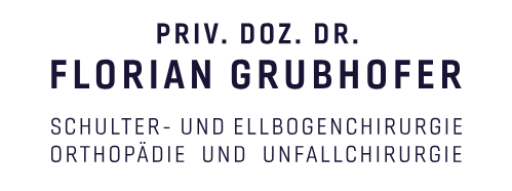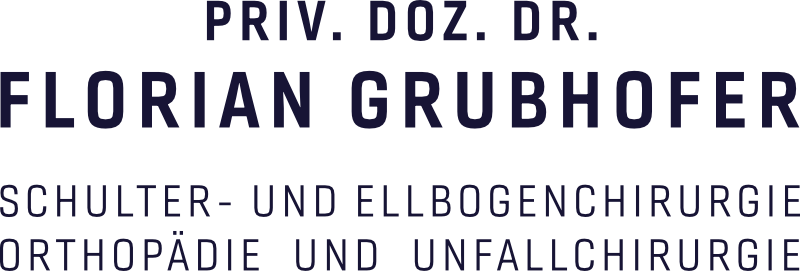Dear patient,
Healing after plate osteosynthesis of the proximal humerus requires structured follow-up treatment in order to achieve an optimal result. Please note the following phases:
Immediately after the operation (first 14 days)
- Resting the tissue: The arm should be immobilized in a sling to allow optimal wound healing.
- Consistent wearing of the sling: The sling must be worn at all times, even at night, to protect the operated tissue.
- Cooling: Cold packs help to reduce pain and swelling. Important: Place a towel between the skin and the cold pack to avoid frostbite.
- Pain medication: Take your pain medication as prescribed by your doctor. If the pain is less than expected, the medication can be reduced.
- Exercise: Fingers, wrist and elbow may be moved.
- Passive movement: From the second post-operative day (48 hours after surgery), pendulum exercises are permitted.
- Note pain threshold: Mild, pulling pain (maximum 3 on a scale of 10) is tolerable. Severe pain requires an adjustment of the load.
Within the first six weeks postoperatively (week 3 to 6 postoperatively)
- Consistent wearing of the sling/: The sling must continue to be worn consistently, especially outside of physiotherapy.
- Passive movement exercises: In addition to the pendulum exercises, guided movements can now also be performed. The operated arm is not actively moved, but is supported by the healthy opposite arm or by trunk movements.
- No active loading: The arm must still not be actively used or loaded.
- Physiotherapy support: The exercises should be coordinated with the physiotherapist and checked regularly.
- Observe pain threshold: Exercises should only be performed in the low-pain range.
Week 7 to 12 postoperative
- Splint weaning: The sling must be removed. Continued wearing is counterproductive.
- Active movements: The arm may now be moved actively, but always in a controlled manner and with physiotherapeutic guidance.
- Independent exercises: The patient should perform the learned movements independently several times a day.
- Aim of physiotherapy: Checking the range of movement, setting new movement goals and correcting the execution of exercises.
- Observe pain threshold: Mild, pulling pain (maximum 3 on a scale of 10) is tolerable. More severe pain requires an adjustment of the load.
From 13 weeks postoperative to 16 weeks postoperative
- Start of strengthening: Initial strengthening exercises are permitted. Gradual increase up to full weight bearing is permitted.
- Training by physiotherapist: Strengthening exercises may only be started with physiotherapeutic guidance.
- Regular training: Exercises several times a day by the patient themselves, checked by physiotherapy 1-2 times a week.
- Observe pain threshold: Exercises should continue to be performed only in the low-pain range.
From 17 weeks postoperative to 24 weeks postoperative
- Transition to full weight bearing:
Sports activities and physically strenuous activities should be resumed gradually and individually adapted.
- Note the pain threshold: Mild pain is acceptable, but weight-bearing should be reduced if the pain becomes more severe.
Please adhere strictly to the instructions in order to optimally support healing. If you have any questions or uncertainties, please contact PD Dr. Florian Grubhofer or your physiotherapist.
With best regards
Yours, Florian Grubhofer

